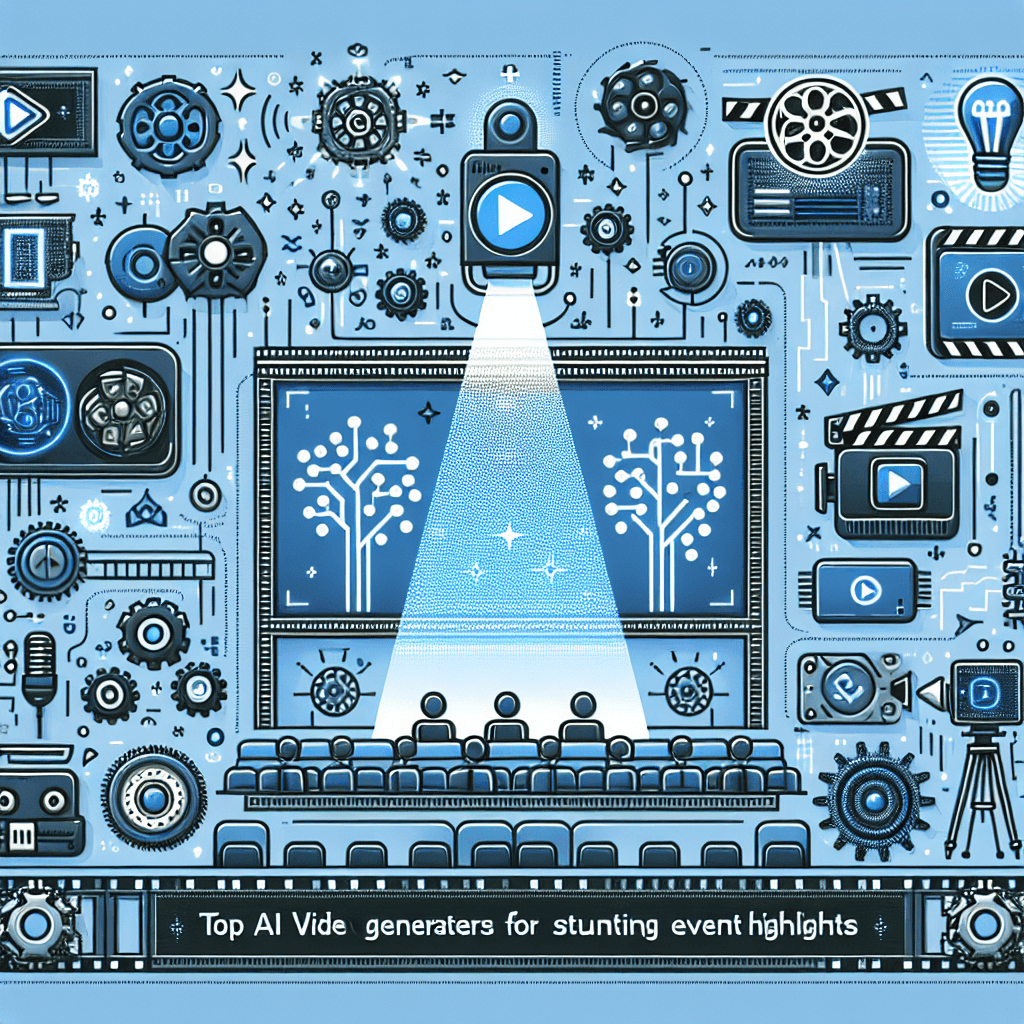In the fast-paced digital era, customer support is increasingly becoming a pivotal aspect of business success. The advent of artificial intelligence (AI) has transformed customer service, allowing businesses to provide rapid responses to queries, troubleshoot issues, and even assist with sales—all while enhancing customer satisfaction. In this article, we will explore the top AI chatbot tools that are redefining customer support experiences.
1. The Emergence of AI Chatbots in Customer Support
AI chatbots are software applications that can simulate conversations with users, utilizing natural language processing (NLP) to understand and respond to customer inquiries effectively. As companies strive to operate around the clock, chatbots have emerged as a cost-effective solution to meet rising demands and expectations from customers.
2. Why Businesses Are Embracing AI Chatbot Technologies
The chief motivation behind integrating chatbots into customer service of organizations is efficiency. Companies can reduce response times from hours to mere seconds. Moreover, chatbots can handle multiple inquiries simultaneously, freeing up human agents to tackle more complex issues. As organizations seek to provide a seamless customer experience, leveraging technology becomes not just beneficial but essential.
3. Key Benefits of Utilizing Chatbots for Customer Support
Cost Savings
By automating routine queries, businesses can significantly lower their operational expenses. This shift enables customer service representatives to focus on high-value tasks that require human intervention.
Increased Customer Engagement
Chatbots are always available, offering customers assistance at any time of day. This 24/7 availability leads to enhanced customer engagement and increases overall satisfaction.
Improved Response Time
Chatbots provide instant replies to common questions, reducing waiting times and providing immediate solutions to customers’ needs.
Data Collection and Insights
AI chatbots can gather and analyze data regarding customer interactions, preferences, and behavior. These insights can be valuable for informing business strategies and improving service quality.
4. Leading AI Chatbot Tools to Consider
1. Drift
Drift is more than just a chatbot; it’s an entire conversation marketing platform. It enables personalized communication through AI and facilitates lead generation by engaging visitors in real-time. Drift’s seamless integration with popular CRM systems ensures that businesses can track customer interactions effectively.
2. Intercom
Intercom offers a robust platform for customer messaging that combines automation with human touches. Its powerful features include proactive messaging, in-app supports, and comprehensive analytics. With Intercom, businesses can create tailored experiences based on user segments, ensuring a personalized approach.
3. Zendesk Chat
To complement its leading customer service software, Zendesk offers its own AI-driven chatbot solution. Zendesk Chat allows businesses to manage inquiries across different channels, providing a consistent experience. The platform offers rich integrations and automated responses to frequently asked questions, making customer service efficient.
4. LivePerson
LivePerson leverages AI to create conversational experiences across multiple messaging channels, including SMS and social media. Its innovative approach helps brands engage their audiences wherever they are. With predictive AI abilities, LivePerson anticipates customer needs based on previous interactions.
5. Tidio
Tidio is a versatile live chat solution that includes automated bots. It offers easy customization and can be integrated into existing platforms such as Shopify and WordPress. With features that support multilingual communication, Tidio expands the market reach for online businesses.
5. Enhancing Customer Support with AI Chatbots
Chatbots enhance support functionality by guiding users through troubleshooting steps or onboarding processes. They reduce the volume of inquiries requiring human assistance, allowing customer service representatives to concentrate on providing valuable guidance rather than simply answering questions.
6. Personalizing Customer Interactions with AI
Today’s consumers expect more than standard responses; they seek personalized attention. Advanced chatbots utilize data analysis to understand customer behavior, selecting the appropriate responses based on a user’s history and preferences. This personalization fosters loyalty and enhances customer relationships.
7. The Future of AI Chatbots in Customer Service
As technology evolves, the capabilities of AI chatbots are expected to grow exponentially. Future developments may include emotion recognition to assess customer sentiments during interactions, enabling bots to tailor responses accordingly. This continued innovation will push the boundaries of what chatbots can achieve in customer service.
8. Overcoming Challenges in AI Chatbot Implementation
Despite their numerous advantages, AI chatbots are not without challenges. Issues such as misunderstandings in customer queries can lead to frustrating experiences. To mitigate this risk, businesses must continually train their chatbot systems using diverse datasets to enhance their accuracy and relevance.
9. Ensuring Compliance and Privacy with AI Chatbots
With increasing regulations around data privacy, businesses must ensure compliance when integrating chatbots. It’s essential to maintain transparency regarding data usage and ensure customers feel secure while interacting with AI-driven platforms.
10. The Role of AI in Multilingual Support
Many businesses operate across international boundaries. AI chatbots can be programmed to handle inquiries in multiple languages, breaking down communication barriers and catering to a global customer base.
11. The Human Element: When to Escalate
While AI can answer many questions, it is crucial to recognize when human intervention is required. Implementing seamless handoff procedures ensures that customers receive the appropriate level of support, reinforcing trust and satisfaction.
12. AI Chatbots vs. Traditional Customer Support
The contrast between AI chatbots and traditional customer support lies in scalability. Human agents face limitations such as time constraints and availability, while chatbots can simultaneously engage numerous customers without loss of quality or service.
13. Case Studies: Success Stories with AI Chatbots
Many businesses have leveraged AI chatbots successfully. For instance, H&M utilized chatbots to help customers select outfits, increasing both engagement and sales. Restaurants like Domino’s have implemented chatbots for order taking, further enhancing convenience for their customers.
14. Future Trends in AI Chatbots
Anticipate advancements in machine learning, innovation in user interfaces, and better integration with existing systems. The future spells increased collaboration between AI and human agents, creating a hybrid model of customer support tailored to diverse needs.
15. The Impact of AI Chatbots on Customer Satisfaction
Statistics suggest that businesses employing AI chatbots see a marked improvement in NPS (Net Promoter Scores) as customers appreciate swift service and intelligent responses. This increased satisfaction can lead to improved customer retention and loyalty.
16. Training Your Chatbots for Optimal Performance
To maximize the effectiveness of chatbots, it is vital to continually update and train them using fresh datasets that reflect changing customer preferences and trends. Regular monitoring and optimization ensure they stay relevant and impactful.
17. The Role of API Integrations in Chatbot Performance
API integrations enhance chatbots by connecting them to various data sources. This capability allows chatbots to access real-time information, ensuring customers receive up-to-date responses regardless of the inquiry type.
18. Building Customer Trust Through Chatbot Transparency
Customers value transparent communication. Clearly conveying how chatbots operate, their capabilities, and data handling policies builds trust and eliminates customer concerns associated with AI interactions.
19. Evaluating Chatbot Performance
It’s critical to evaluate chatbot performance regularly. Metrics such as conversation completion rates, customer feedback, and engagement levels provide insights into effectiveness and areas for improvement.
20. Conclusion: Embracing AI Chatbots for the Future of Customer Support
In conclusion, AI chatbots represent an essential evolution in customer support strategies across industries. Their ability to provide instantaneous responses, personalize customer interactions, and glean valuable insights signifies a leap toward more efficient and engaging service experiences. As technology continues to advance, businesses adopting AI chatbot solutions will undoubtedly stay ahead of the curve, ensuring that they meet and exceed customer expectations in a fast-paced digital landscape. Embracing this innovative tool not only enhances service delivery but also paves the way for long-term customer satisfaction and loyalty.








